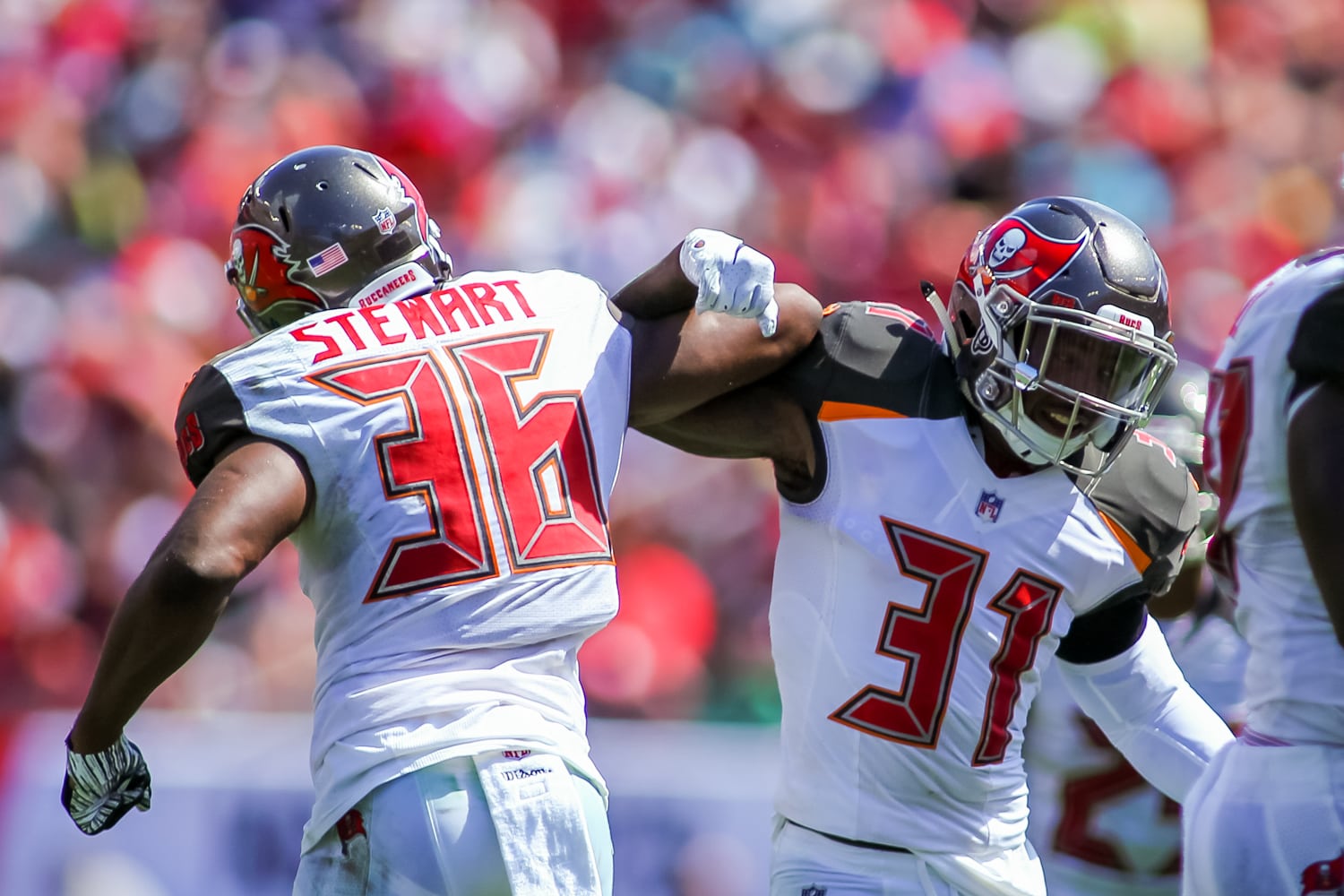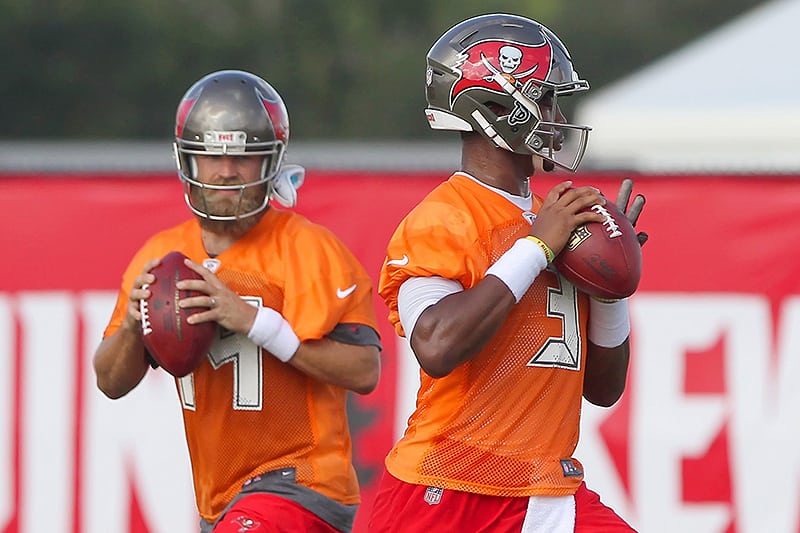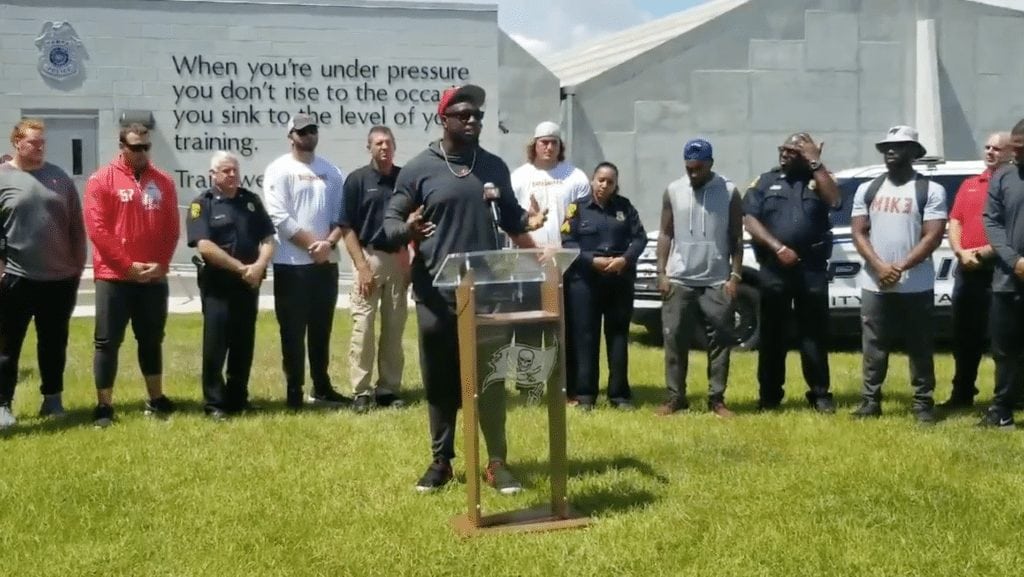All-Twenty Tuesday: Confidence And Chemistry
In this week’s All-Twenty Tuesday I’m going to take a look at the Bucs defense, but I’m going to do so with an emphasis on the defensive backs. With cornerbacks Vernon Hargreaves III now out for the year and Brent Grimes suffering an early injury, it’s going to be up to a handful of the Bucs young players to get the job done – or as we established on the previous page, keep the Bucs offense up by a score, on average, each game.
Compared to rookies Carlton Davis, M.J. Stewart and Jordan Whitehead, young players like Justin Evans and Ryan Smith look like veterans. It’s a group that carries a good amount of talent, but two weeks in it also carries inexperience – both were evident in Week 1 and Week 2.
Grimes was a late scratch against the Saints, as his groin injury didn’t even pop up until the Friday before. With Grimes out, Davis got his first NFL start on the outside.
Davis is a player who uses length and physicality to his advantage as an outside cornerback. He’s the type of guy you draft to potentially match up against players like Julio Jones, Devin Funchess, Larry Fitzgerald, those kinds of bigger receivers on the outside. But when the Bucs drafted Davis, there was a sense of intrigue on how his style would fit, knowing the type of quarters zone coverage the Bucs had preferred over the last few years under defensive coordinator Mike Smith.
As you can see in the clip above, that type of off coverage isn’t where Davis gains his confidence – open space play-making isn’t his forte.
Davis, the cornerback to the top of your screen, is a guy who is much more comfortable when the scheme allows him to play close to the line of scrimmage and at least gives a chance to be physical without obvious pass interference.
Being a rookie cornerback is really difficult. The analogy I love the most when describing rookie corners is that their first year in the league is like trying to drink water through a firehose. You’re trying to adjust to the speed of the game, you’re going up against good wide receivers every single week (which doesn’t happen in college), you’re learning all kinds of techniques and schemes. It’s a lot to take in.
All that said, putting your rookie defensive backs in places where their natural ability shine early on in their careers is key. Confidence is one of the most crucial elements of playing defensive back, and if you, as a coach, kill a young cornerback’s confidence when you didn’t have to, their failures are just as much on you as they are on them.
Davis (bottom of your screen in the play above) had a tough game against the Saints; that’s a bad match-up for any cornerback making his first NFL start. Drew Brees is a pre-snap wizard who will notice and exploit your tendencies before the ball is even snapped, and the offensive weapons around him are some of the best in the league.
But, for the most part, I thought that when Davis was allowed to do what he naturally does best, which is win with length and physicality, he held his own. It was a tough day for the entire defense in New Orleans, as they were switching from different zone and man assignment to try to slow down Brees, but I thought Davis had a good learning day of what NFL competition was like while adjusting to what he himself might do best to counter it in a variety of different coverage calls.
In the Eagles game, Davis (bottom of the screen) was given even more opportunities to play man coverage, and I think he did well with that responsibility.
Reading a quarterback’s eyes is something that you gain with experience. Yes, the Bucs still have to call quarters coverage and Cover 3 and Cover 2 because they are staples of playing defense. But, in the nature of those coverages, you’re asking young guys to watch a quarterback instead of a man and try to not get fooled. When you get to play man coverage, you just have to focus on the assignment in front of you. When Davis was asked to do that, I thought he did it well, especially against the Eagles.
When you put your young defensive backs in positions to play well and gain confidence, then the other things start to come along at a progressive rate.
I loved the play above. I loved it when I watched it live. I thought it was a great play by Davis, even though the end result was a touchdown.
Due to how acclimated Davis became as the game went on, he knew he didn’t have to just stare at his receiver and do his singular job. Once he knew he had his guy locked, he looked to try to help. I loved the way his eyes went to the quarterback at the right time, and how he broke on the pass well; he just couldn’t get his arm high enough to bat the ball away. Davis did everything right on that play other than be taller, and for a rookie cornerback, those are encouraging things.
I wouldn’t even say Davis has played well, but I’ll say that he’s been solid in his natural ability, and he improved from Game 1 to Game 2. That’s all you’re hoping for.
M.J. Stewart, on the other hand, is hitting his learning curve a bit harder.
I’ll say this: It’s hard to play outside cornerback as a rookie, but it might be even harder to play nickel as a rookie.
Due to the nature of the position, there is just so much space that you have to account for and make plays in as a nickel defensive back. Due to this, you have to first be very confident in what you’re doing. You can’t second guess what your assignment is or when to break on a route, receiver or the ball.
In Stewart’s first big start against the Eagles, you saw some hesitation from him.
Now, I do want to say this. For a guy like Davis, gaining confidence comes in a more obvious way. You can play him in press coverage on a few plays and get his confidence up because you know that’s what he does best. For nickel players, you can’t really manufacture that kind of confidence.
In the play above, you can see how hesitant Stewart was. In fact, he even fully turned his head around to try to get a grip on his zone. Zone coverage is all about chemistry with your teammates, and right now Stewart is unsure of himself in coverage and is doubting the rest around him because of it. Not in a negative way towards them or him. You can just tell he’s just a little hesitant on exactly where to be and the timing of zone coverage with the first team.
I see a lot of the same things from Stewart right now that I saw in Vernon Hargreaves during his rookie season. As you can see in the clip above, there are just a couple little extra steps and some slight hesitation to what he’s doing. He’s just not completely there confidence-wise.
When I watched Stewart at North Carolina, he was a fearless defensive back. It takes time for that to come back out at the next level, but I know it’s there. Right now Stewart needs to just get his feet wet, get acclimated with the NFL game, and find within himself how to cover receivers of this caliber. When he gets that you’ll see more decisiveness and less confusion.
Speaking of confusion, there is something that I wanted to touch on that I discovered as I re-watched both the Saints game and the Eagles game from a defensive perspective.
I’m certain you’ve seen offenses move players around in the pre-snap before. Ever wonder why they do that? I mean, if they wanted the wide receiver or running back in motion to be where they ended up, why didn’t they just run there out of the huddle? The reason for this is to create potential confusion in the defense by forcing them to make little adjustments on the fly before the snap.
One of the little adjustments that is very popular in today’s game is something call “Banjo” coverage.
With the implementation of all kinds of spread concepts, one way defensive coordinators have adjusted to certain formations is with player-initiated coverage adjustments. “Banjo” coverage is used to counter when offenses either run stack or bunch formations.
In a stacked formation, the offense will place one wide receiver (usually a bigger body) up on the line of scrimmage, and then a smaller receiver a few steps back basically right behind them. In a bunch formation, the offense will do the same with the front receiver on the line of scrimmage, but have two receivers behind him a few steps back and split in distance evenly behind him. This is ideal for bubble screens and getting players free releases off the line of scrimmage with no contact (since the corners can’t reach out and press a receiver who is a few steps back of the line).
The way defenses counter not being able to press these formations is to run inside-out responsibilities. What that means is that the defensive backs will appear to be in man coverage in how they’re aligned opposite the receivers in stack or bunch formations, but who they end up covering ends up playing like a zone. In banjo coverage, the outside cornerback (who can’t press) will take whichever route the two receivers run goes to the outside. That makes it easiest for them to get up and cover. The middle player, either a nickel corner or safety (who can press), first engages with the front receiver, then takes whatever routes goes towards the middle.
See? The appearance of man coverage but it’s really zone.
In the play above, you see the Saints come out in a stack on the left side with one receiver right behind the other. That usually calls for some sort of banjo audible/adjustment. Before the snap, you see Evans motion a signal to Smith. As the ball was snapped, neither of the two got physical with either wide receiver, confusion was had, and an easy touchdown was made.
So what happened?
Well, I can’t tell you 100 precent for sure what happened because I don’t know the exact call, but if Evans adjusted to Banjo (usually the player closer to the middle makes that call), he should not have run towards the man going into the flat. He should have bumped the front player close to the line of scrimmage and then dropped back into the middle area. The reason I think that was the case is because Smith puts his hands up at Evans after the play as to say: “You audible to Banjo. Why did you go to the outside?”
Now, Smith’s reaction time appeared slow enough for that play to likely be a score anyways, but it did point out a lack of chemistry amongst this young group that I noticed a handful of times after that.
As the Saints went in motion in the play above, it appeared they were going to go into a stack formation at the snap, which was the case. As a result, the outside cornerback bailed down the sideline, and Evans once again was in the middle, but this time he pressed the man in the middle. The problem was he didn’t follow through with the assignment. If Alexander was covering the flat, Evans should have continued up the seam to negate a deep ball up the middle.
He didn’t, and the Bucs got away with one there. Another example of a missed assignment, if what the coverage appeared to be was the one that was actually called.
The Eagles run a lot more bunch concepts than they do stack, but the inside-out coverage adjustments were still there for the Buccaneers.
The play above was run decently well, but you could see Stewart’s hesitation in the middle. It’s just some of the little things I’ve noticed when going over the tape that tell me this young secondary, as expected, is still feeling out the chemistry with one another. You can see the evidence of that when they struggle with those adjustments before the snap. Being able to play adjustment coverage such as Banjo as a second nature is key when defending the top offenses in the NFL.
It’s a talented group, but if you don’t do your assignment along with the rest of the unit, your talent is wasted. It will take confidence and chemistry for this young secondary to get the Bucs where they want to go.
Trevor Sikkema is the Tampa Bay Buccaneers beat reporter and NFL Draft analyst for PewterReport.com. Sikkema, an alumnus of the University of Florida, has covered both college and professional football for much of his career. As a native of the Sunshine State, when he's not buried in social media, Sikkema can be found out and active, attempting to be the best athlete he never was. Sikkema can be reached at: [email protected]




